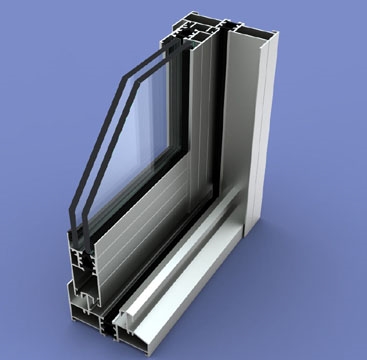[Chinese aluminum industry network] 6151 alloy was born in the United States in the 30s of the last century, its prototype alloy 6051 on December 12, 1963 by the Aluminum Corporation of the United States as a very-used alloy, now commonly used in the alloy There are five: 6151,6351,6351A,6451,6951 alloy. Except for the 6351A is a French alloy, the others are all American alloys. These alloys have been widely used in military weapons for the manufacture of crankcase forgings and rolling rings, mines and machine forgings. All parts requiring good forging performance, high strength and good corrosion resistance can be processed with this alloy. Before 1954, it was called 51S in the United States and was named 6151 alloy in 1954. chemical composition The chemical composition of Type 6151 alloy is shown in Table 1. In terms of composition, the 6951 alloy has a lower Si content, which is equivalent to only about 35% of other alloys. Therefore, its strength performance should be low, but it contains 0.15% Cu—0.40. %Cu, while other alloys do not contain Cu, so there is little difference in their mechanical properties. Mechanical properties The lower mechanical properties of 6151 alloy are shown in Table 2. The gauge length of the specimen is 50mm or 4d (d is the diameter of the specimen). Alloy 6151 has no low-temperature brittleness and can be used to machine parts that work at extremely low temperatures. At 25°C tensile strength Rm = 330N/mm2, yield strength Rp0.2 = 298N/mm2, elongation A = 17%, When the temperature dropped to 200 °C, all performance rose, reaching 395N/mm2, 345N/mm2, and 20%, respectively. The working temperature of 6151 alloy should not exceed 120°C. Physical properties The density of the 6151 alloy at 20°C is 2700kg/m3; the liquidus temperature is 649°C, the solidus temperature is 588°C, and the average linear expansion coefficient at -50°C to 20°C is 21.8μm/(m·k), 20°C— - The average coefficient of linear expansion at 100°C is 23.0 μm/(m·k), the average coefficient of linear expansion at 20°C to 200°C is 24.1 μm/(m·k), and the average coefficient of linear expansion at 20°C to 300°C is 25.0 μm /(m·k). Uniform conductivity of 6151 alloy at 20°C: 54% IACS for O-state material, 42% IACS for T4 state, 45% IACS for T6 state, resistivity at 20°C: 32nΩ·m for O-state material, T4 41nΩ·m for the state, 38nΩ·m for the T6 state; specific heat capacity at 895J/(kg·K) at 20°C; thermal conductivity at 20°C: 205W/(m·k) for the O state material, and 163W for the T4 state (m·k); 175 W/(m·k) in T6 state. The potential of the 6154 alloy in a solution containing 53 g of NaCl/L+3 g of H2O2/L at 25[deg.] C. is −0.83 V for a 0.1N calomel electrode. Process characteristics The 6151 alloy is annealed at 413°C/(2h to 3h), cooled down to 260°C at a cooling rate of no more than 27°C/h, and then air cooled. Solution treatment temperature (510 °C -525 °C) / 4min, quenching at room temperature in water, large forging quenching at 65 °C - 100 °C water. Artificial aging specification (165°C - 175°C)/(8h - 12h). Thermal processing temperature 260 °C -480 °C.
High quality polyester fabric, UV-resistant, washable, light and air permeable, , durable, good wind resistance performance, easy installing, EN13561-2015 certification.
Use the special tape to fix the products, have the good protection for your original window/door.
All the fabric have the Grey Scale Level 5 performance under the xenon-arc lamps with the condition ISO 4892-2:2013 cycle 1.
Polyester Insect Screen,Window Accessories,PP Pleated Screen,Mesh Pleated Insect Screen Huanghua Techo Building Material Co., Ltd. , http://www.insectsscreen.com
Military aluminum alloy 6151
